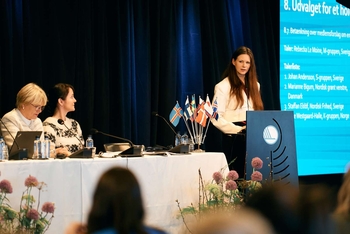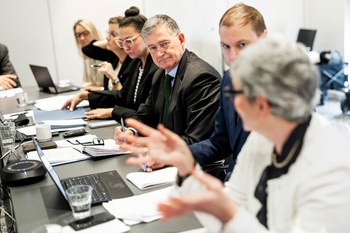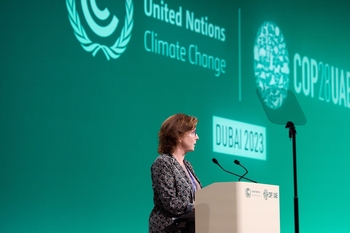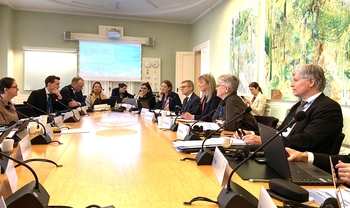Nordic Energy Day featured solutions to some of the world’s pressing energy issues
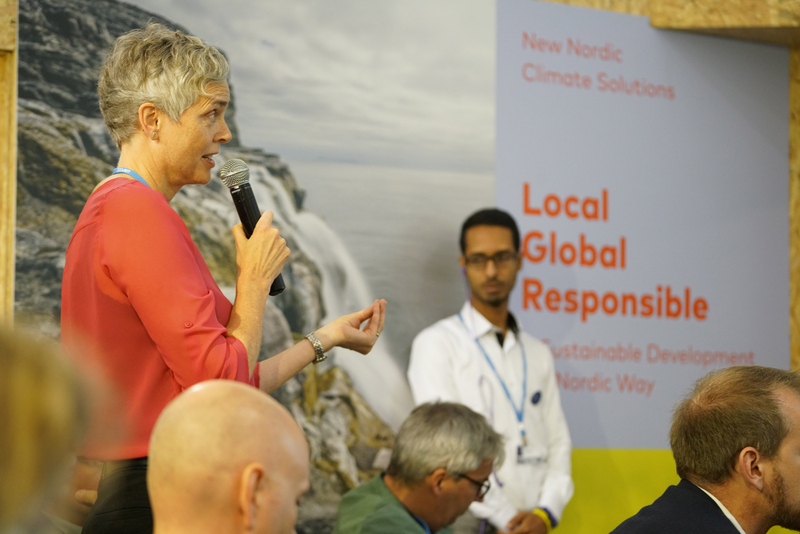
The Nordic Energy Technology Perspectives 2016 identifies the development of carbon capture and storage technology (CCS) as the key to reducing emissions from energy-intensive industry. This is an important element in fully decarbonising the region’s energy systems by 2050. Also the IPCC 5th Assessment report identifies CCS as a crucial climate solution for limiting global warming.
Reykjavik Energy provides three quarters of the Icelandic population with geothermal energy, mostly for electricity and space heating. The introduction of geothermal energy has played a key part in increasing the share of renewables in the country from 12 per cent in 1940 to 85 per cent in 2015, reducing CO2-emissions by over 100 million tons. In the quest to further reduce emissions, the company has developed a method of capturing CO2 and turning it into rock.
“What we do after capturing the gas is to dissolve it in water and inject it into the basaltic bedrock where chemical reactions occur, turning the CO2 into rock in just under two years,” says Dr. Edda Aradóttir, Managing Director of Research and Development at Reykjavik Energy. At least 95 per cent of the re-injected CO2 is mineralised within two years, at an abatement cost of only 25 dollars per ton of gas. Cost per ton in conventional CCS is two-five times higher.
“The technology is open-source and we encourage people to apply it wherever possible,” says Hólmfríður Stefánsdóttir, Head of Environmental Affairs at Reykjavík Energy.
”The debate about sequestration of CO2 is often about whether we should do it or whether we should focus our efforts on eliminating the emissions sources,” says Jonas Helseth, Director at Bellona Europa. “However, we need steel to build windmills and cement to build energy-efficient buildings. These are key basis products for our low-carbon future, meaning that CO2 emissions will be with us for a while. The climate science is clear – there’s a need for CCS.”
Air pollution must be reduced in the energy sector
The International Energy Agency (IEA) presented the findings of the recently published World Energy Outlook Special Report 2016 on Energy and Air Pollution. The report proposes a pragmatic and attainable strategy, the so-called Clean Air Scenario, to reconcile the world’s energy requirements with its need for cleaner air.
“Air pollution is the fourth largest human health risk, and 6,5 million premature deaths around the world are associated to it every year,” says Timur Guel, co-author of the report. “The reason why IEA is working on air pollution is that many of the root causes – and therefore also the cures – are to be found in the energy sector.”
The Clean Air Scenario describes a strategy to cut pollutant emissions and premature deaths caused by air pollution by 50 per cent by the year 2040. Based solely on existing technologies, the scenario relies on action in three key areas: establishing a long-term air quality goal, putting in place a package of clean air policies for the energy sector, and ensuring effective monitoring, enforcement, evaluation and communication.
“For the energy sector, we’re proposing a package of clean measures, based on two pillars,” Guel explains. “One is to accelerate the energy transition towards more efficiency and more renewable energies. The other is to support more widespread use of advanced pollution control technologies.”
Restorative growth in praxis
The Nordic countries and Nordic co-operation have had a strong focus on green growth in recent years, and have successfully demonstrated that decoupling emissions and economic growth is possible. The Sahara Forest Project, which was presented at the energy day, is a good ambassador of this approach, addressing the production of food, water and energy in desert areas.
“According to the UN, the production of food needs to increase by 60-70 per cent by 2050,” says Joakim Hauge CEO of the Sahara Forest Project. “The question is how we’re going to achieve that without significant negative effects on energy consumption, CO2-emissions, water scarcity and desertification, which is currently thirty times faster than ever before.”
“Our approach is one of restorative growth,” Hauge continues. “It’s about establishing green vegetation and green jobs through profitable production of food, biofuels, water and energy. We’re convinced that with more integrated solutions, many of these global trends can be turned.”
The Sahara Forest Project builds facilities consisting of concentrated solar power, saltwater-cooled greenhouses and desalination production for freshwater – powered by the solar energy – as well as outdoors growing zones. The idea is to use waste streams from each of these technologies as a resource for the next. The first pilot project was built in Qatar in 2012, and a new facility, capable of producing 120 tons of vegetables per year, is now being built in Jordan.
“These technologies form a system where we use what we have enough of – sand, CO2, sunlight and seawater – to produce what we need more of – renewable energy, food and freshwater.”
Energy self-sufficiency in Island communities
Remote and isolated island communities presented their efforts to reduce their dependency on importing fossil fuels and accelerate the transition to renewable energy. As the energy challenges are common to island communities around the world, Nordic countries have entered into collaboration with islands in the Southern Hemisphere on this important issue. At the event, Small Island Developing States (SIDS) presented a new lighthouse initiative that develops and implements a structured approach to the islands’ transition to renewable energy.
The Faroe Islands have introduced ambitious targets for the rollout of renewables. Like many island communities, the Faeroes are heavily dependent on energy from fossil fuels for electricity and heating, as well as for the energy-intensive fisheries and aquaculture industries. In 2015, 93 per cent of the total energy consumption was from fossil fuels and only 7 per cent from renewables.
“We want to speed up the transition towards production of green energy sources and invest in technologies to make the country self-sufficient with energy,” says Kari Mannbjørn Mortensen. “By 2030, the aim is that all electricity production will come from renewable sources and we want to reduce our dependency of fossil fuels by 50 per cent.”
The shift to renewable energy will be based on wind, solar and tidal energy.
“Our current total energy consumption is 1,380 GWh, but a lot of the energy is lost when fossil fuels are used for electricity and heating. By using renewable energy from wind, solar and tidal sources, we could cover our total energy need with 470 GWh, reducing the total energy use by factor three.”
